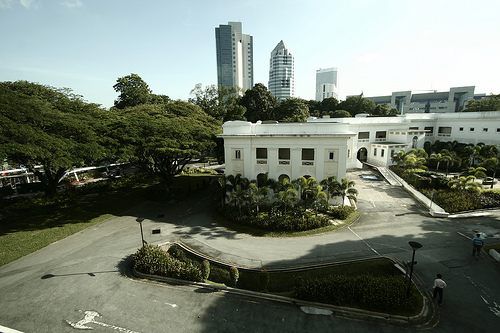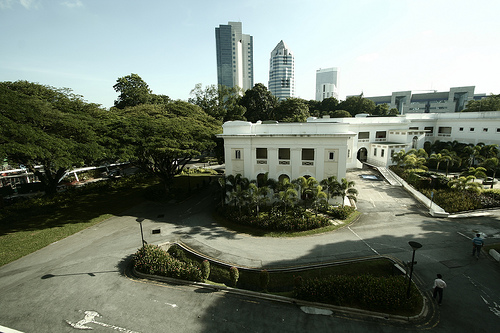 Singapore.Photo: Avinash AnandI really, really dig what Singapore is trying to do. Currently it’s about half covered in green and wants to go farther:
Singapore.Photo: Avinash AnandI really, really dig what Singapore is trying to do. Currently it’s about half covered in green and wants to go farther:
In Singapore’s next “green road map,” its 10-year development plan, the country aims to go from being “a garden city” to “a city in a garden.” “The difference might sound very small,” says Poon Hong Yuen, the chief executive of the country’s National Parks Board, “but it’s a bit like saying my house has a garden and my house is in the middle of a garden. What it means is having pervasive greenery, as well as biodiversity, including wildlife, all around you.” …
“As we’ve moved into the more knowledge-based industries, they bring along talent who like to live in a great city,” said Mr. Poon. “It’s no longer about being well tended, but also about the livability, the excitement of living in a great city — and biodiversity is part of it.”
There’s reason to believe that exposure to trees, parks, and forests benefits physical and psychological health. I expect the same is true of exposure to bees, butterflies, birds, and other creatures who might be persuaded to cohabit with humans in green cities. Of course greenery also cleans the air and enriches the soil, reducing runoff pollution. Yay for urban nature!
In particular, increasing greenery and biodiversity in cities would serve the important project of making cities friendlier places to raise children. I had a long, eye-opening discussion with author Richard Louv a few years ago about this. He wrote a book called Last Child in the Woods: Saving Our Children from Nature-Deficit Disorder about the immense body of research showing how much children are harmed by being deprived of natural settings.
Finally, pushing up the level of biodiversity in a city would represent an important test case. There’s all sorts of fascinating research going on right now about urban ecosystems, with sometimes surprising findings about the interaction of flora, fauna, water use, and air quality. I certainly suspect that increasing biodiversity in the city will produce all kinds of welcome results, but it would be nice to have empirical evidence in hand.
Anyway, woo Singapore.



